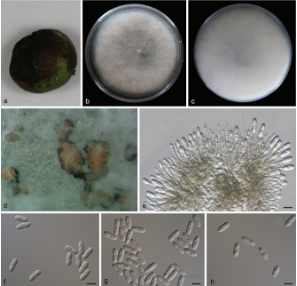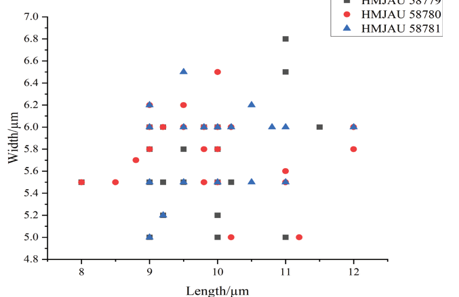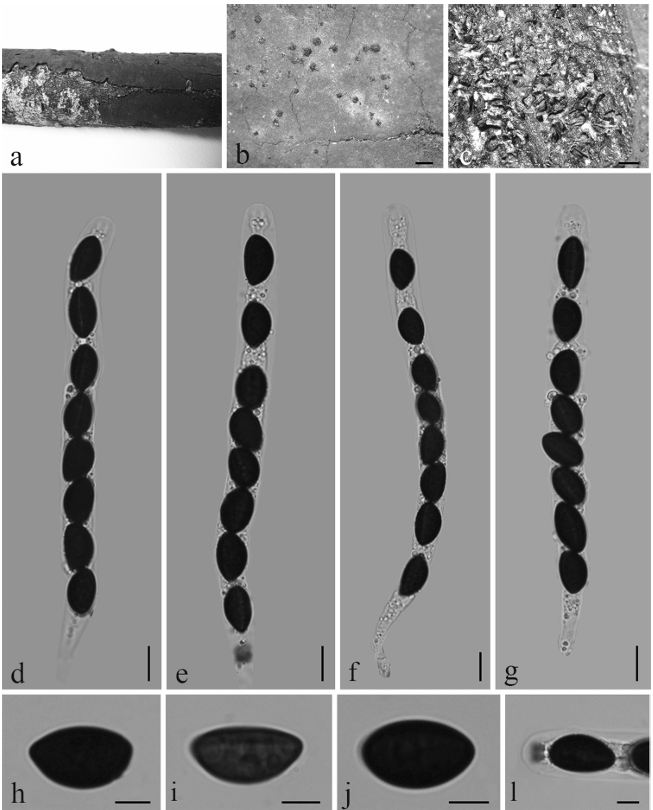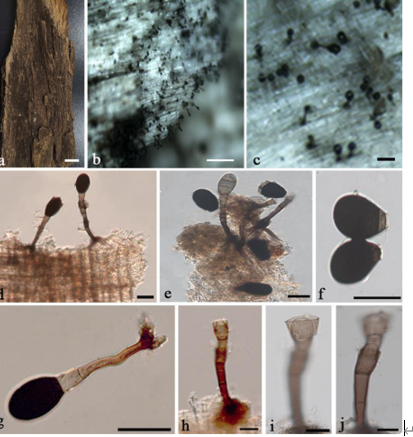Camposporium multiseptatum D.F. Bao, Z.L. Luo, K.D. Hyde & H.Y. Su 2020
Index Fungorum number: IF557025; Facesoffungi number: FoF 07063
Holotype: CHINA, Yunnan Province, saprobic on submerged decaying wood in Dulong River, October 2016, Z.L. Lou, 2D H 1–4–2, S-792 (DLU 792, holotype), ex-type living culture, DLUCC 792.
Morphological description
Sexual morph Undetermined. Asexual morph Colonies on substratum effuse, superficial, black. Mycelium immersed, composed of hyaline, branched, smooth hyphae. Conidiophores micronematous, mononematous, short, simple, unbranched, flexuous, pale brown to subhyaline, smooth. Conidiogenous cells mono- or polyblastic, terminal, determinate, subhyaline. Conidia 97–111 μm long ( x̄ = 103.8 μm, SD = 7.2, n = 30), 9–11 μm wide ( x̄ = 9.8 μm, SD = 0.8, n = 30), fusiform to cylindrical, truncate at both of the ends, 10–13-septate, dark brown at central cells, paler both of end cells, with a short, septate, subhyaline, single appendage at apex, 11–17 μm long ( x̄ = 13.8 μm, SD = 3, n = 15), 3.5–4.7 μm wide ( x̄ = 4.1 μm, SD = 0.6, n = 15), smooth.Culture characteristics: Conidia germinating on PDA within 24 h. Colonies on MEA at room temperature reaching
3.3 cm diam. in 3 weeks, mycelium grayish brown to dark brown after 4 weeks, composed brown to dark brown, septate, smooth hyphae.
Habitat: submerged decaying wood in freshwater.
Distribution:China.
GenBank Accession: ITS:MN758889;LSU :MN759020;SSU:MN758955;TEF1-α :MN784093.
Notes: Camposporium multiseptatum is phylogenetically close to C. appendiculatum (Fig. 55).Morphologically, C. multiseptatum is similar to C. appendiculatum in having short, simple conidiophores, mono- or polyblastic, terminal, determinate conidiogenous cells and cylindrical, septate conidia, truncate at both ends, with a single appendage at apex. However, C. multiseptatum differs from C. appendiculatum in having shorter appendage (11–17 μm versus 72–114 μm). Moreover, we compared the base pairs of TEF1-α gene regions, and there are 17 base pairs that were different in 875 nucleotides of the TEF1-α region. These results strongly support our isolate to be a new species.
Reference: Kevin D. Hyde1,5,8,22 · Yang Dong2,3 · Rungtiwa Phookamsak1,5,6,7 et al.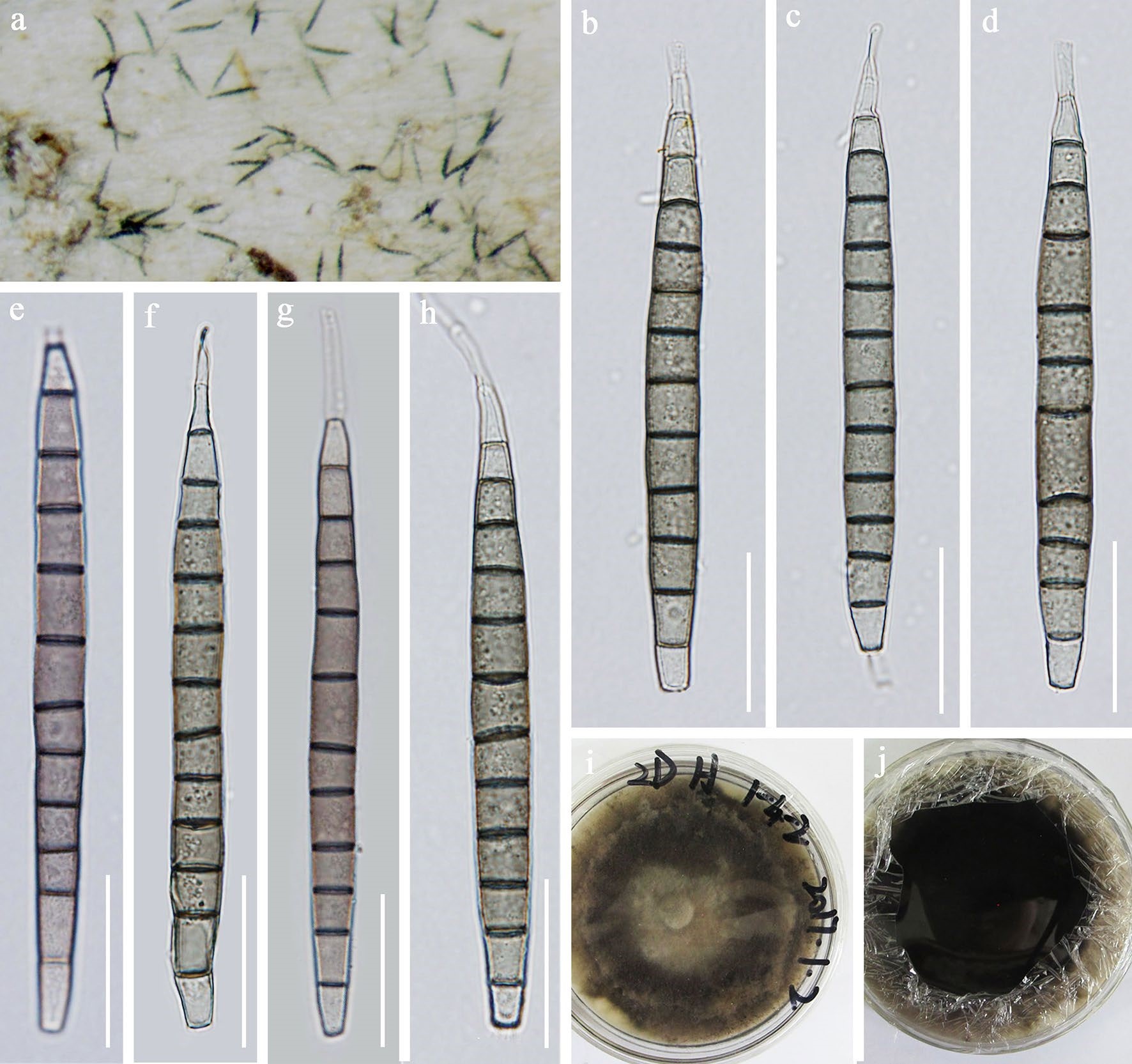
Camposporium multiseptatum (DLU 792, holotype). a Appearance of the fungus on wood. b–h Conidiophores with conidiogenous cells and conidia. i Surface view of culture on PDA. j Reverse view of culture on PDA. Scale bars: b–h = 30 μm


